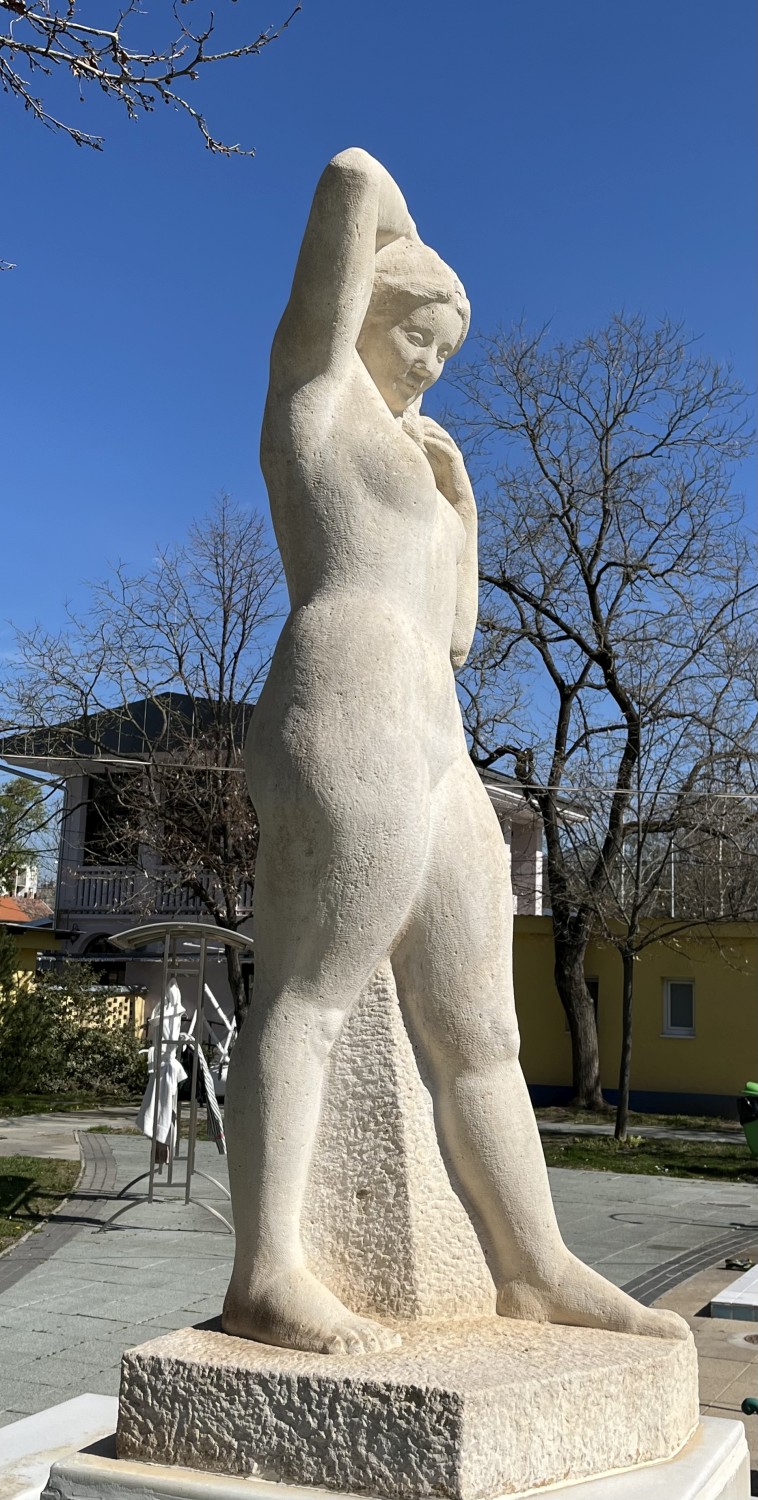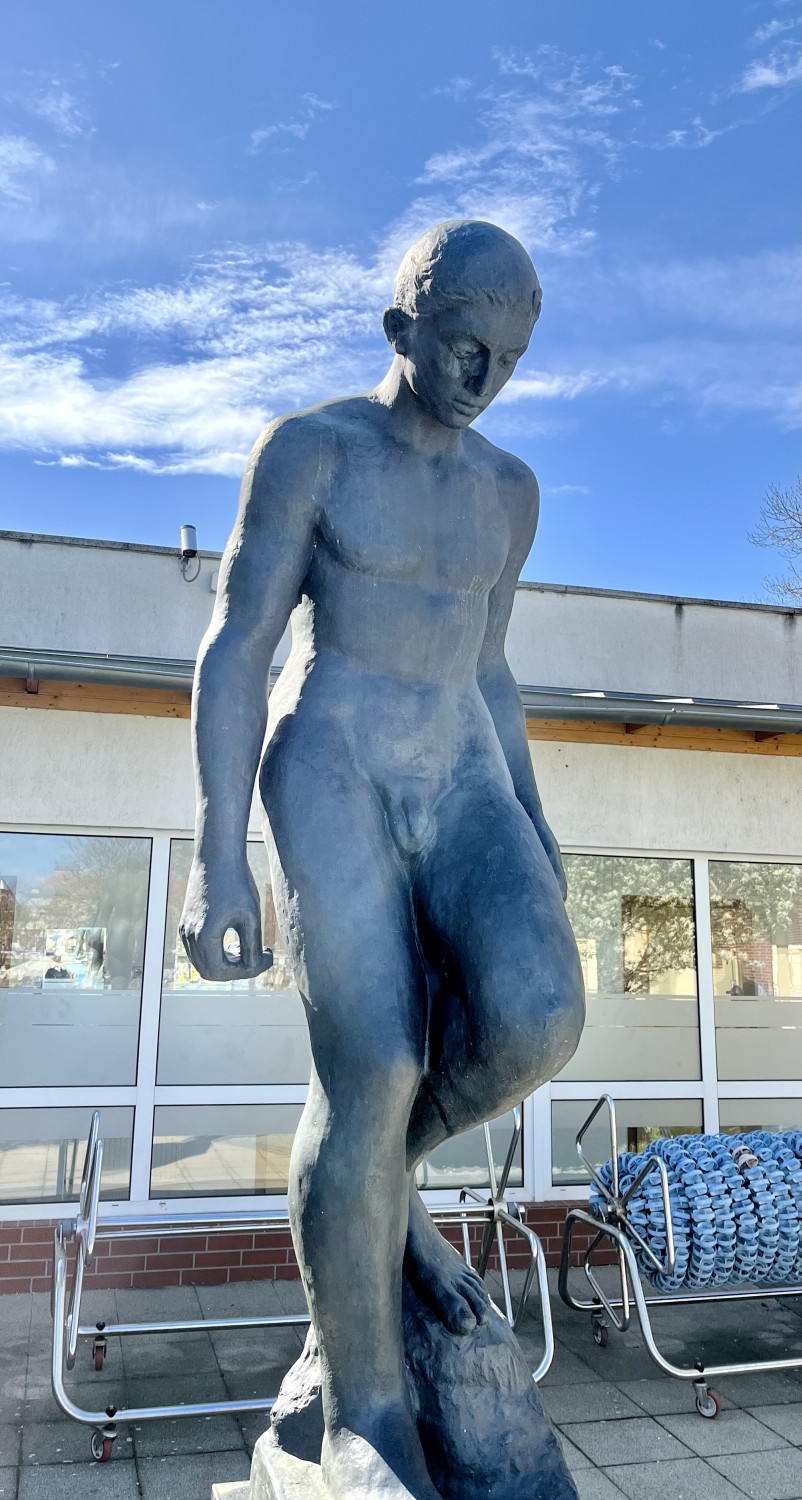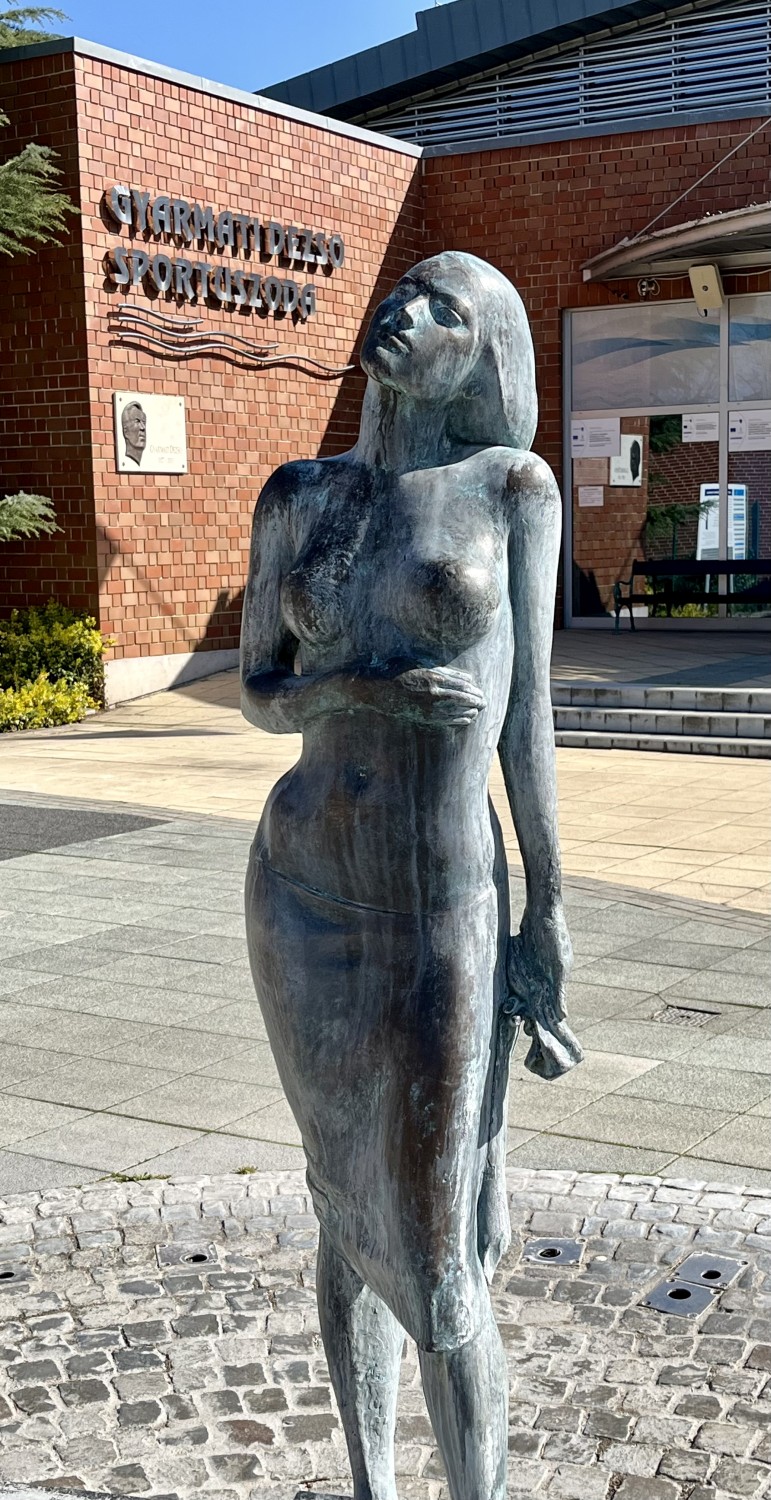Our statues
In the planning and construction of the spa complex in 1929, the use of value prevailed. The idea of aesthetically enriching this bleak environment came up before, but it was realized for the first time only in 1955, when Ferenc Medgyessy carved the Debreceni Venus in stone as one of the last works of his life.

DEBRECENI VÉNUSZ (1955)
Ferenc Medgyessy
Limestone, 173 cm
The plinth is a concrete block covered with a marble slab
The placement, which was selected on the spot by Ferenc Medgyessy himself, is very fortunate. The statue was placed at the end of the old 100-meter-long and 20-meter-wide water surface, on a square column raised in the middle of the overflow of the warm water well. In combination with the surrounding trees, smaller buildings and the water, the bright, radiant white limestone is extremely artistic. The full-figured, standing female nude, straightening her hair, reflects all the characteristics and virtues of Medgyessy's art: compactness, closedness, simplicity. The plump shapes of the young body carry a healthy, natural sensuality. Vitality radiates from the shapely, somewhat rustically sculpted female body. The legs and hips are closed, the arms and the face are more mobile, more detailed. The work is the aesthetic beauty of the bath. It has become a favorite of the thousands of people who come here in the summer, and a daily artistic pleasure.

VÍZBELÉPŐ (1962)
Béni Ferenczy
Bronze, 190 cm
The plinth is a concrete slab covered with a black marble slab
The story of the statue's arrival at Vásárhely is of art historical importance. Béni Ferenczy made ceramics in 1955 at the Majolika factory. During his stay here, he also got to know the city. During his visit to the pools, the painter Gyula Almási told him that a statue of Medgyessy would soon enrich our bath. The idea was raised, with which Béni Ferenczy also agreed, that it would be nice to have a Ferenczy work together with Medgyessy. Thus, the two greatest creators of Hungarian sculpture of the 20th century would be together. Due to the nature of the place, Béni Ferenczy thought of the Vízbelépő. However, this was already sold out. It was planned to be placed in front of the cinema in Tihany. In the end, we managed to convince the authorities that a nude statue is more suitable for a bath than in front of a movie theater. This is how the Balaton Administrative Committee handed over the statue to the city council. It is unfortunate that the Vízbelépő was not placed in the location originally proposed by Béni Ferenczy. This would have been in the middle of the south end of the pool opposite Medgyessy's Venus of Debrecen. However, this failed due to the springboard. The statue was placed next to the northern entrance in 1962, then in 1977 it was relocated to the eastern part of the spa, around the children’s pool, in an area covered with trees. The Vízbelépő was placed in the place dreamed by the artist only in 2003, during the renovation of the beach and the construction of the Municipal Sports Pool.
The male nude steps forward and down, as the title suggests. The young male body carries classic beauty. It's proportional, but we don't feel that its appearance is primary. Body and soul live together in the work. All of this stems from the posture, the body leaning forward, the head looking down, expressing depth and spirituality.

VÁSÁRHELYI VÉNUSZ (2003)
Attila Nagy
Bronze, 175 cm
The plinth is granite
Attila Nagy, a sculptor from Hódmezővásárhely, prioritized tenderness when creating the Vásárhelyi Vénus. This is expressed by emphasizing the fine lines, slender, soft forms of the body. The natural beauty was transformed into an artistically beautiful bronze sculpture without sacrificing the aesthetics of the model. The artist created this excellent sculpture by creating a unity of natural and artistic beauty. The placement is also excellent, the givenness of the approach enables the combined effect of the whole and the richness of detail.

NAPOZÓ (1962)
Imre Varga
Bronze, 93 cm
The plinth is limestone
The Napozó was erected in 1962 in the park of the old Lung Care Institute. In order to have a psychological effect, the managers of the institution, seeking to achieve aesthetic pleasure and relieve anxiety, placed the statue of the healthy, beautiful, young girl radiating the zest for life in the corner of the then still flowery, well-kept park. In 2011, after the closing of the lung care center, the statue was moved to the back area pools of the spa.
Imre Varga's slim, tight female figure exposed to the sun expressed the beauty of the body's natural forms by making full use of the material's possibilities. He made the veil almost completely invisible, providing a free opportunity for the connection between the life-giving sunlight and the human body. He simplified the face because he wanted to express this cosmic, ancient, elemental encounter. The hard edges and geometric rigor of the horizontal limestone blocks, placed at right angles to each other as a pedestal, emphasize the grace of the female body with a counterpointing effect.









